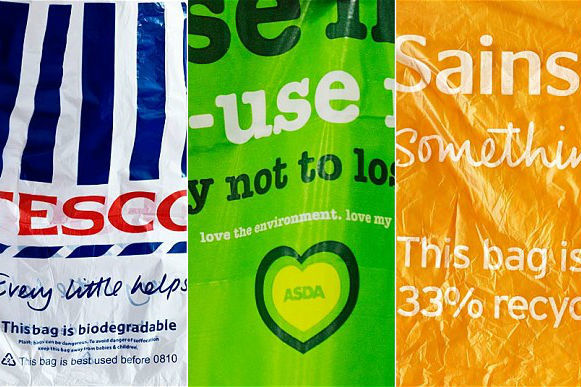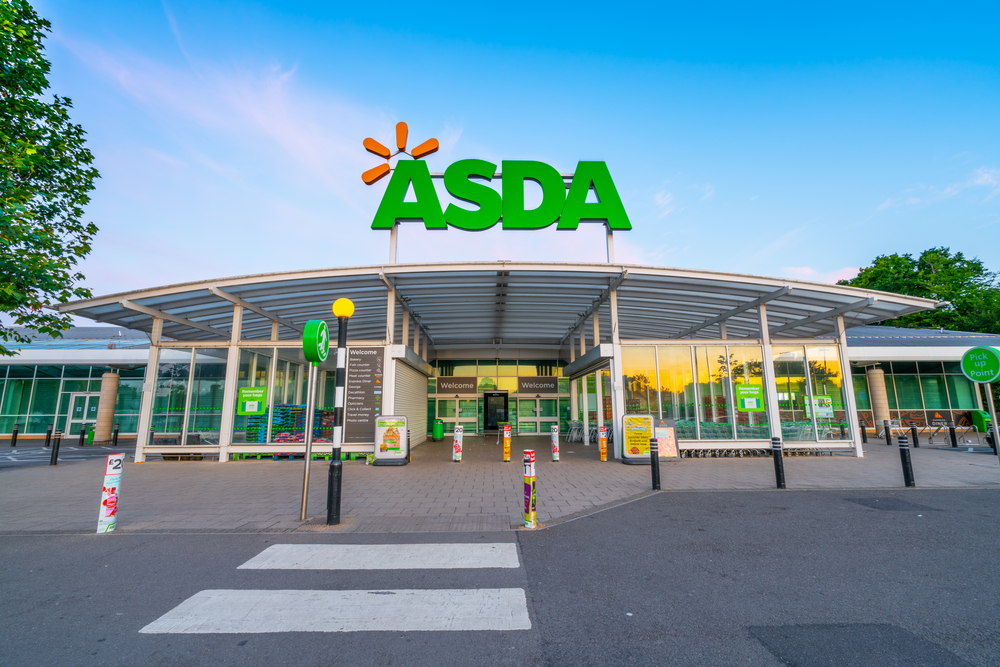The UK’s first unrestricted Christmas in three years led to shoppers heading to supermarkets to celebrate at home.
Sainsbury’s CEO Simon Roberts says: “Customers went all out for the big Christmas dinner this year after two years of a less-than-normal Christmas. Customers wanted to really treat themselves and celebrate at home together.”
But who emerged as the grocery sector’s big winners and what were the big shopping trends over Christmas?
The big winners
Brits spent over £12 billon on groceries over Christmas, the highest amount on record, according to Kantar.
Take-home grocery sales increased by 7.6% in the 12 weeks to 25 December 2022 while year-on-year growth in December was even higher at 9.4%.
Despite the stellar top-line figures, this rate is still below the 14.4% rate of grocery inflation so much of this growth is driven by price inflation.
Both Tesco and Sainsbury’s admitted that despite strong sales growth, volumes were slightly down year on year.
Tesco CEO Ken Murphy says this was partly due to the strong comparison period last year when the emergence of the Omicron led people to avoid hospitality and eat and drink at home, and partly down the the cost-of-living crisis.
Unsurprisingly, Aldi and Lidl were the big winners as shoppers continued to watch their pennies with sales up 26% and 24.5% respectively.
[wpdatatable id=41 table_view=regular]Perhaps more surprisingly, Asda emerged as leader of the pack of traditional grocers, with sales up 6.4% according to Kantar.
Shore Capital analyst Clive Black applauds Asda’s owners, the Issa brothers and TDR Europe for bringing new “focus, energy and growth avenues” to the business.
He says: “The new owners have brought higher quality execution, growth opportunities in convenience and retail partnerships. Initial moves with Essentials private label and its loyalty scheme have also landed well.”
Both Sainsbury’s and Tesco had strong Christmases and even Morrisons, the only major grocer that Kantar said posted a sales decline, had its best performance since June 2021.
What were the trends?
Trading down
Value was critical this Christmas as shoppers simply had less money to spend.
“Customers are watching every penny and every pound. They were making sure budgets stretched as far as possible to have a good time over Christmas.” Simon Roberts, CEO, Sainsbury’s
This inevitably led to a shift to the discounters with Lidl estimating that it won £63m of trade from the traditional grocers, more than triple the amount of last year.
Lidl GB chief executive Ryan McDonnell says: “Every week of the year we are seeing more customers coming through our doors, switching spend to Lidl from the traditional supermarkets.
“We know they switch to us to make savings, but then they stay with us when they realise that they’re not having to compromise on quality, and this Christmas was no exception.”

Shoppers were also trading down to supermarkets’ own label products over the Christmas period, with sales rising by 13.3%, well ahead of a 4.7% increase in branded lines.
Sainsbury’s own-brand sales rose by 10% over Christmas.
Roberts says: “Customers are watching every penny and every pound. They were spending carefully and making sure budgets stretched as far as possible to have a good time over Christmas.
“Customers are looking for strong value and they’re looking harder than ever before”
Trading down was also a trend at Tesco, as sales of own-label frozen food rose by 25% on last year in the week before Christmas.
The shift towards value was even a big driver in the more premium end of the market.
M&S’ Remarksable Value range was up 27% on last year and featured in 20% of customer baskets, which boss Stuart Machin says shows that its customers wanted “competitive prices whilst not compromising on M&S quality”.
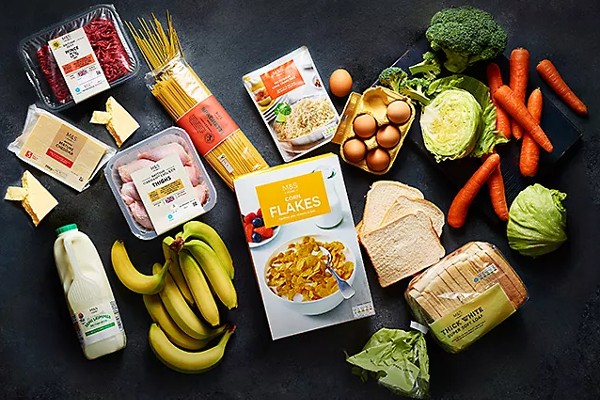
“There’s no doubt that our entry price products did resonate with customers who were seeking out value. I think the work we’ve done on quality and value in foods is paying off.”
Eating in
As much as spend was shifting to the discounters, Murphy says Tesco benefited from consumers shifting away from eating out into eating in.
“We have seen customers continuing to trade down but that has taken a number of different forms,” he says
“For some customers, it’s trading down from national brands to great value Tesco products; for others it is seeking out Tesco from the higher-price premium-focused retailers, or using our great range of ready meals to substitute for a takeaway or restaurant meal.”
Murphy says it saw a “significant rise” in its premium Finest line and it’s ‘That’s Dinner Sorted’ ready meals flew off the shelf.
It was a similar story at Sainsbury’s where Taste the Difference sales jumped 10% year on year, and 27% against pre-pandemic levels.
Roberts says: “Shoppers were trading into private label so they can use some budget to treat themselves.”
Splashing out on Christmas meal, but cutting back on gifts
The one aspect of Christmas that shoppers splashed out on was their actual Christmas dinner, which Roberts says they went “all-in” for.
As evidence of this, Sainsbury’s posted its biggest ever Christmas on champagne and fizz.
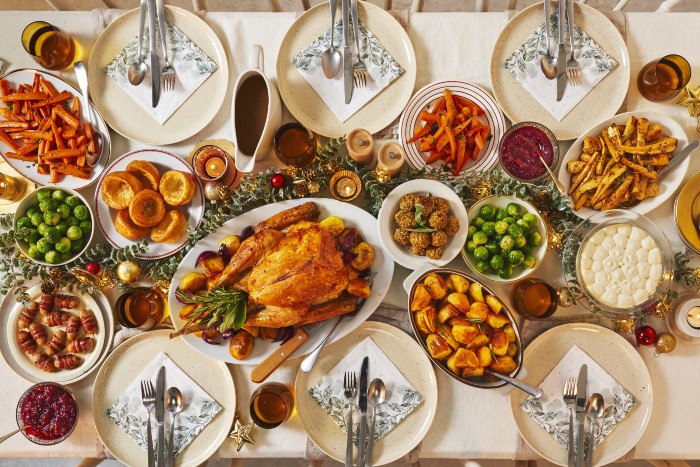
Majestic also saw soaring champagne and English sparkling wine sales.
While Christmas lunch was still a feast, Tesco’s Murphy says his customers bought “slightly more modest gifts”.
“People were celebrating but in a responsible way. Customers have been practical and smart,” he says.
More store visits and shopping around
Shoppers returned to grocery stores over the festive period, with Kantar reporting that visits were up 5% year on year in December.

Sainsbury’s saw a dramatic uplift in store visits over Christmas as people shunned online amid Royal Mail strikes and scoured shops for the best deals.
Roberts says: “Customers were careful where spent their money. They preferred to come in and see what they are buying and see the deals and offers. It’s easier to do that when you go into a shop and see it all.”
Retail expert Paul Stainton says shoppers were going to more stores in the search for deals.
“Shoppers have shopped around more, visiting more retailers than usual in a bid to find the best value for money,” he tells Retail Gazette.
Online sales normalise
As shoppers returned to stores, online sales continued to normalise from the highs of the pandemic.
Sainsbury’s online grocery sales fell more than 10% over the Christmas period.
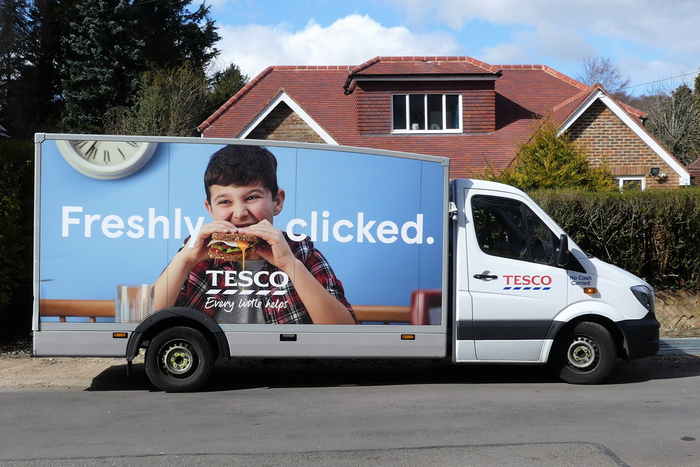
Despite Tesco’s online sales edging up 2% over the core Christmas weeks, across the full quarter revenue dipped 0.7%.
External factors such as the Royal Mail strike hindered online as shoppers turned to stores to gain certainty that they would receive gifts.
However, Murphy believes online sales are stabilising at around 13% of total sales post-pandemic.
Although this is significantly below the elevated 18% achieved in the first quarter of 2021, online is still 59% higher than pre-Covid levels.
Meanwhile, Ocado also reported “an unwind of pandemic shopping behaviours, accelerated by the onset of the current cost-of-living crisis”.
Its shoppers are buying fewer items online as they struggle with soaring costs, with shopping basket volumes fell by 12.1% last year, or six fewer items. Shopping frequency also declined.
Availability remains strong
Ensuring good availability in stores and online was a priority for the grocers over Christmas and they delivered.
“We’ve had our best Christmas from the supply chain point of view for many years. We planned for a good Christmas and we delivered a good Christmas. No one would be left disappointed.” Ken Murphy, CEO, Tesco
Concerns over a lack of turkey availability were unfounded as grocery’s supply chain pulled through.
Murphy says: “We’ve had our best Christmas from the supply chain point of view for many years. We planned for a good Christmas and we delivered a good Christmas.
“We had party foods, turkeys and fresh vegetables available right up to Christmas Eve so that no one would be left disappointed.”
M&S also benefited from improved availability of seasonal lines, including turkeys.
Meanwhile, Sainsbury’s Argos chain, which suffered from product shortage of toys and electricals last year, was also well stocked on fast-selling products like air-fryers, tablets and mobiles.
World Cup boosts sales
The World Cup provided a filip for grocery sales over the festive period.
Aldi UK and Ireland CEO Giles Hurley says: “This year, Christmas was all about family and football as people came together to celebrate in a way we’ve not enjoyed for years.”

Sainsbury’s CEO Roberts concurs and says cost-conscious football fans ditched the pub to watch big matches at home, which played into the hands of the grocers.
Kantar found that England’s Quarter Final match against France on 10 December saw the biggest grocery sales day of the year, surpassed only by the Friday and Saturday before Christmas.
“This year, Christmas was all about family and football.” Giles Hurley, UK CEO, Aldi
Tesco boss Murphy said that the grocer’s Whoosh delivery service saw a “massive spike in orders” during the World Cup as people had “an immediate need” to enjoy alcohol and snacks during the game.
What do grocery leaders expect from 2023?
Shoppers may have spent to make sure this Christmas was a merry one, but the reality of the cost-of-living crisis will soon set in January and they will be watching budgets closer than ever.
That’s why both Tesco and Sainsbury’s started the year with big price campaigns.
Sainsbury’s has added more than 300 products to its Aldi Price Match initiative, while Tesco has vowed to freeze prices on a 1,000 lines until Easter.
However, some respite could be in the offing for hard-pressed consumers as both Murphy and Roberts believe that inflation should start to ease in the second half of the year.
Some more positive news is that shoppers have continued to shop in the new year.
Murphy says that Tesco shoppers have spent as normal in January and its performance has been “pretty good”.
The retail boss says customers are expressing a “sentiment of cautious optimism”.
“Customers are weathering the storm in a full employment market and the recession might be shallower than predicted,” he says.
Meanwhile, M&S’ Machin says its shoppers are planning on spending on big events like Valentine’s Day, Easter and Mother’s Day, which should help boost grocery sales.
The January blues may be setting in for some, but there are clear reasons to be positive as we enter 2023 for grocery retailers.
Click here to sign up to Retail Gazette‘s free daily email newsletter

